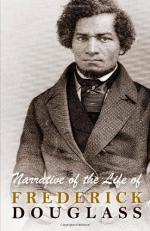Colonel Lloyd kept from three to four hundred slaves on his home plantation, and owned a large number more on the neighboring farms belonging to him. The names of the farms nearest to the home plantation were Wye Town and New Design. “Wye Town” was under the overseership of a man named Noah Willis. New Design was under the overseership of a Mr. Townsend. The overseers of these, and all the rest of the farms, numbering over twenty, received advice and direction from the managers of the home plantation. This was the great business place. It was the seat of government for the whole twenty farms. All disputes among the overseers were settled here. If a slave was convicted of any high misdemeanor, became unmanageable, or evinced a determination to run away, he was brought immediately here, severely whipped, put on board the sloop, carried to Baltimore, and sold to Austin Woolfolk, or some other slave-trader, as a warning to the slaves remaining.
Here, too, the slaves of all the other farms received their monthly allowance of food, and their yearly clothing. The men and women slaves received, as their monthly allowance of food, eight pounds of pork, or its equivalent in fish, and one bushel of corn meal. Their yearly clothing consisted of two coarse linen shirts, one pair of linen trousers, like the shirts, one jacket, one pair of trousers for winter, made of coarse negro cloth, one pair of stockings, and one pair of shoes; the whole of which could not have cost more than seven dollars. The allowance of the slave children was given to their mothers, or the old women having the care of them. The children unable to work in the field had neither shoes, stockings, jackets, nor trousers, given to them; their clothing consisted of two coarse linen shirts per year. When these failed them, they went naked until the next allowance-day. Children from seven to ten years old, of both sexes, almost naked, might be seen at all seasons of the year.




